
 | SOCO Blog |
19 July 2015
THE STICK MAN AND HIS COMPANIONS
The Summer skies have a lot to offer in the way of astronomical objects that can viewed with binoculars or a telescope. One of my favorite regions to scan with binoculars is the portion of the sky just above the constellation Scorpius. It's loaded with clusters and interesting star fields. One object that I always enjoy focusing in on is a small group of mostly 6th and 7th magnitude stars located around 3 degrees above the Scorpion's stinger, marked by the twin stars Shaula and Lesath. With my 10 X 50 binoculars under good sky conditions, this group of stars forms what appears to me to be a sort of connect-the-dots stick figure man (Figure 1). His left arm is made from dimmer stars and is hard to see with my binoculars, but the rest of the "Stick Man" stands out pretty well against a relatively dark background. In a small telescope, like my 80-mm autoguiding scope, the figure is easily recognized.
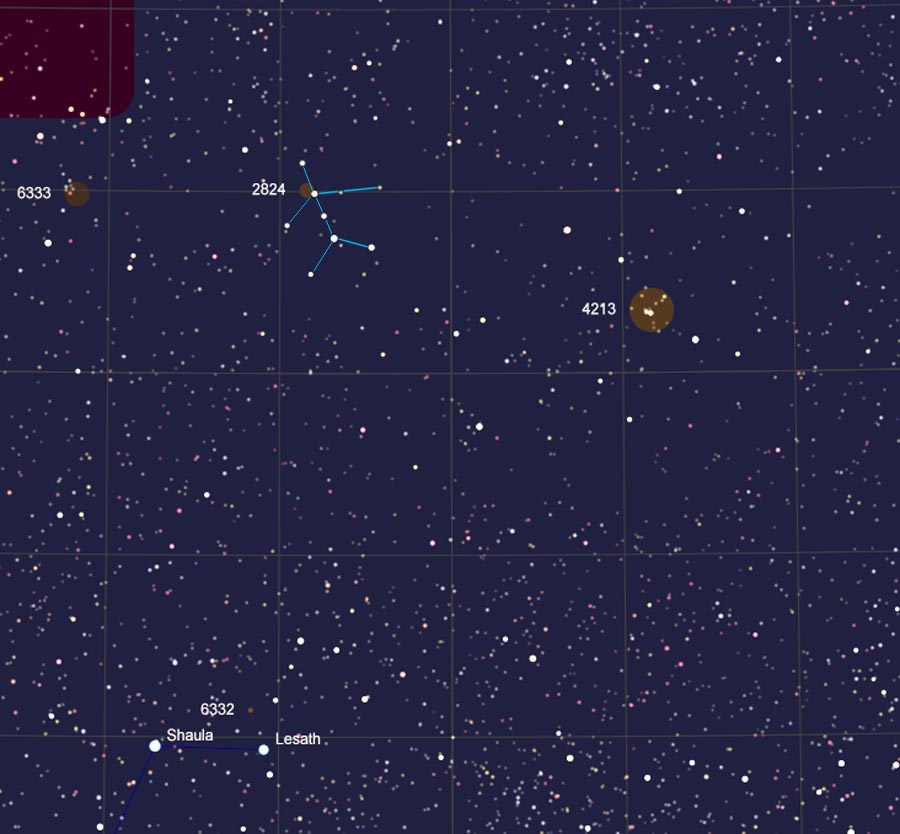
Figure 1. Location of the "Stick Man" above the stinger (Shaula and Lesath) of Scorpius.
Source: Adapted from Cartes du Ciel.
Figure 2 identifies the stars that make up the "Stick Man" along with some deep-sky objects within his reach. Some characteristics of the stars are summarized in Table 1. From the information presented in the table, it's obvious that the stars making up the "Stick Man" don't constitute a real open cluster. Since the stars that form an open cluster are all created at about the same time from the same proto-stellar material, they tend to be the same spectral type. In the "Stick Man", we've got an assortment of stellar classes, including blue Type B, blue-white Type A, yellow Types F and G, and red Type K. Cluster stars should also be at about the same distance if they're physically associated— the available distance values for the stars in Table 1 indicate that most are scattered over a wide range of distances. So, the "Stick Man" is simply an asterism.
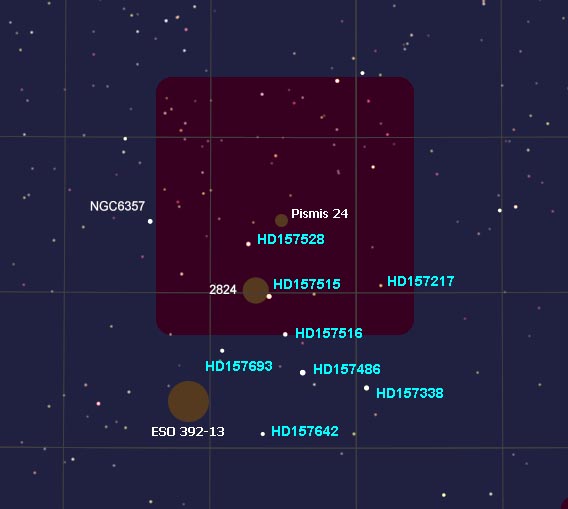
Figure 2. Stars (identifiers in blue text) making up the "Stick Man", along with deep-sky objects (clusters in brown, nebulas in red).
Source: Adapted from Cartes du Ciel.
Table 1. Some characteristics of the stars making up the "Stick Man" (Source: SIMBAD).
|
The "Stick Man" is a pretty prominent asterism, so I wondered whether any other observers had taken note of this group of stars. After some searching, the only reference that I could find to these stars comes from the extensive list of asterisms compiled by the Deep Sky Hunters Yahoo Group. In their list, posting #4354 (from 29 August 2008) describes an asterism called "Mr. Q's Lost Sock" which appears to be made up of the five brightest stars in Table 1 (HD157528, HD157515, HD157516, HD157486 and HD157338). Referring to Figure 2, these five stars make up a sort of bent L-shape figure that could represent a Christmas stocking hanging from a fireplace (as it is described in the posting).
While the "Stick Man" is not an open cluster, there are some in his immediate area. There is also a large nebula complex encompassing the upper portion of the asterism. I really wasn't fully aware of these objects until I imaged this region. Figure 3 presents a color composite image of this region acquired on 13 July 2015. The image was created from 16 90-sec images acquired in each of the Red, Green and Blue spectral bands. The set of images was processed using SIAM and color-balanced using Exoatmospheric G2V Correction. The color balance of the image is correct because the colors of the stars making up the "Stick Man" match their spectral classes in Table 1.
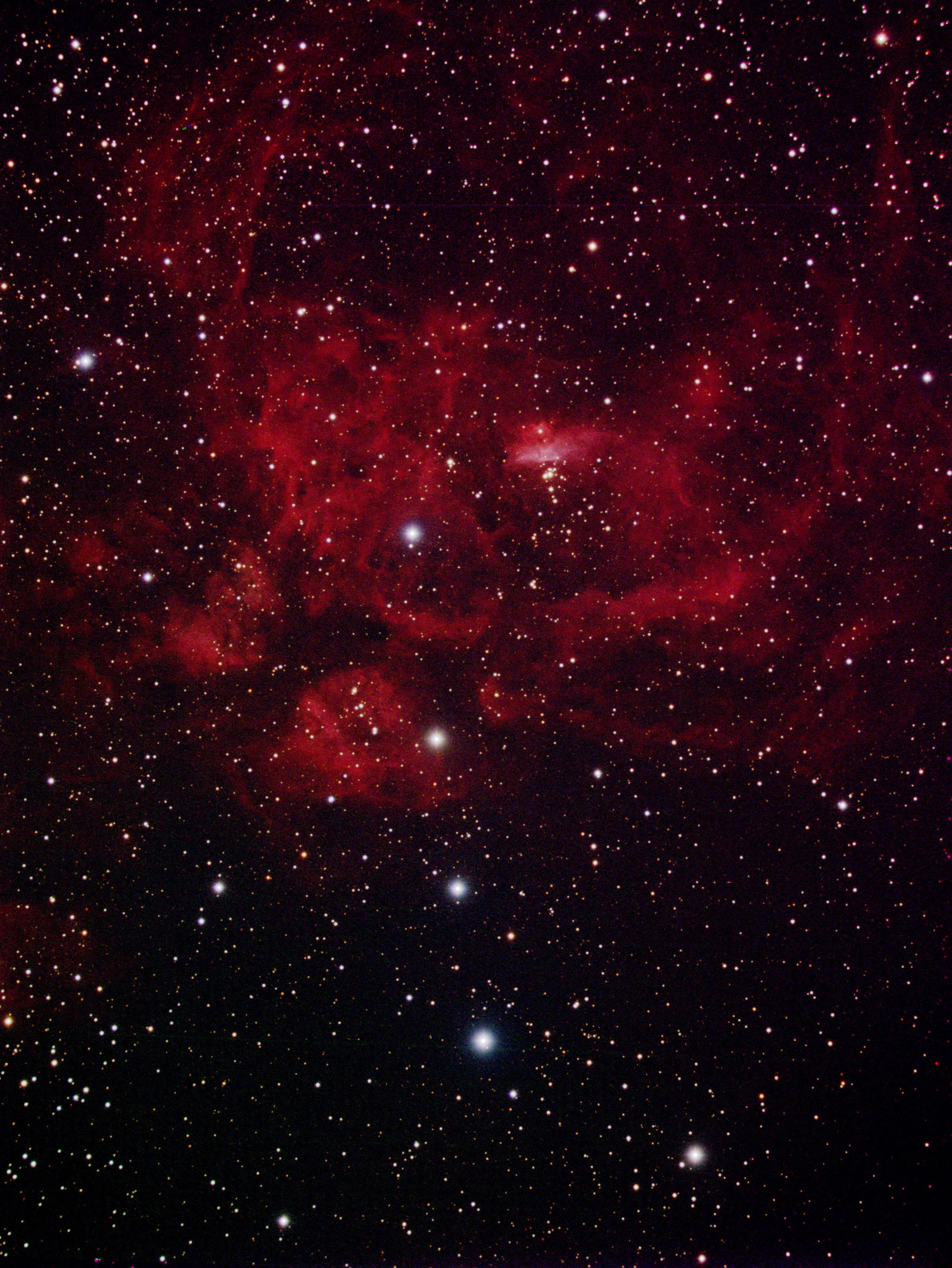
Figure 3. Color composite image of the region around the "Stick Man".
In Figure 3, the collection of scattered stars near the bottom left corner is ESO 392-13 (see Figure 2). According to Brent Archinal and Steven Hynes (Star Clusters, Willmann-Bell Publishers, Inc., 2003), this sparse group of around 25 stars is not a true open cluster. However, the group of stars adjacent to HD157515 is likely to be a true open cluster. Archinal and Hynes describe it as an "unknown" cluster, but Cartes du Ciel identifies it as open cluster 2824 in "Open Cluster Data 5th Edition" (I think this may be a reference to the Lund Catalog of Open Cluster Data). This small cluster (diameter 5 arc-min) has a visual magnitude of 9.6 and is involved in some nebulosity, as indicated in Figure 3.
The most notable cluster in the region is the smallest, Pismis 24. It has a diameter of 2 arc-min, a visual magnitude of 9.6, and contains around 15 stars. Pismis 24 is shrouded in nebulosity, and studies have shown that this nebulosity has supported the formation of a group of exceptionally large stars. The brightest of these stars, Pismis 24-1, is a triple star system with each member having a mass of around 100 times that of our Sun. There are several other members of the cluster greater than 50 solar masses. It is not known why this stellar nursery is creating such large stars.
The most prominent deep-sky feature in Figure 3 is the large region of nebulosity collectively identified as NGC 6357. It has been called the "Lobster Nebula", while the scientists of the Midcourse Space Experiment have given it the name the "War and Peace Nebula". This is because, from images taken in infrared light, they thought that the eastern portion of the nebula resembled a skull while the western portion resembled a dove— hence, "War and Peace". Frankly, in visible light images of this nebula,I haven't been able to really make out a lobster, a skull, or a dove. More about this later.
Most sources describe NGC 6357 as an emission nebula. However, Archinal and Hynes call it a "possible supernova remnant", which would put it in the same class as the Veil Nebula. Figure 3 is a "true color" image of the nebula, which shows it glowing deep red due to Hα emissions at 656.3 nm. In addition to the broad-band Red, Green and Blue images, I also acquired narrow-band images in at 656.3 nm (Hα) and 486.1 nm (Hβ). These monochrome images are shown in Figure 4, with each created from six 15-min images. Often, emission nebulas shine through a combination of both Hα and Hβ emissions— since Hα is deep red and Hβ is light blue, we see the resulting mixture as "electric pink" (see, for example, M 20). However, Figure 4 shows little in the way of Hβ emissions for NGC 6357— thus, the nebula glows predominantly deep red in Figure 3. The only "pinkish" part of the nebula is the area immediately surrounding Pismis 24.
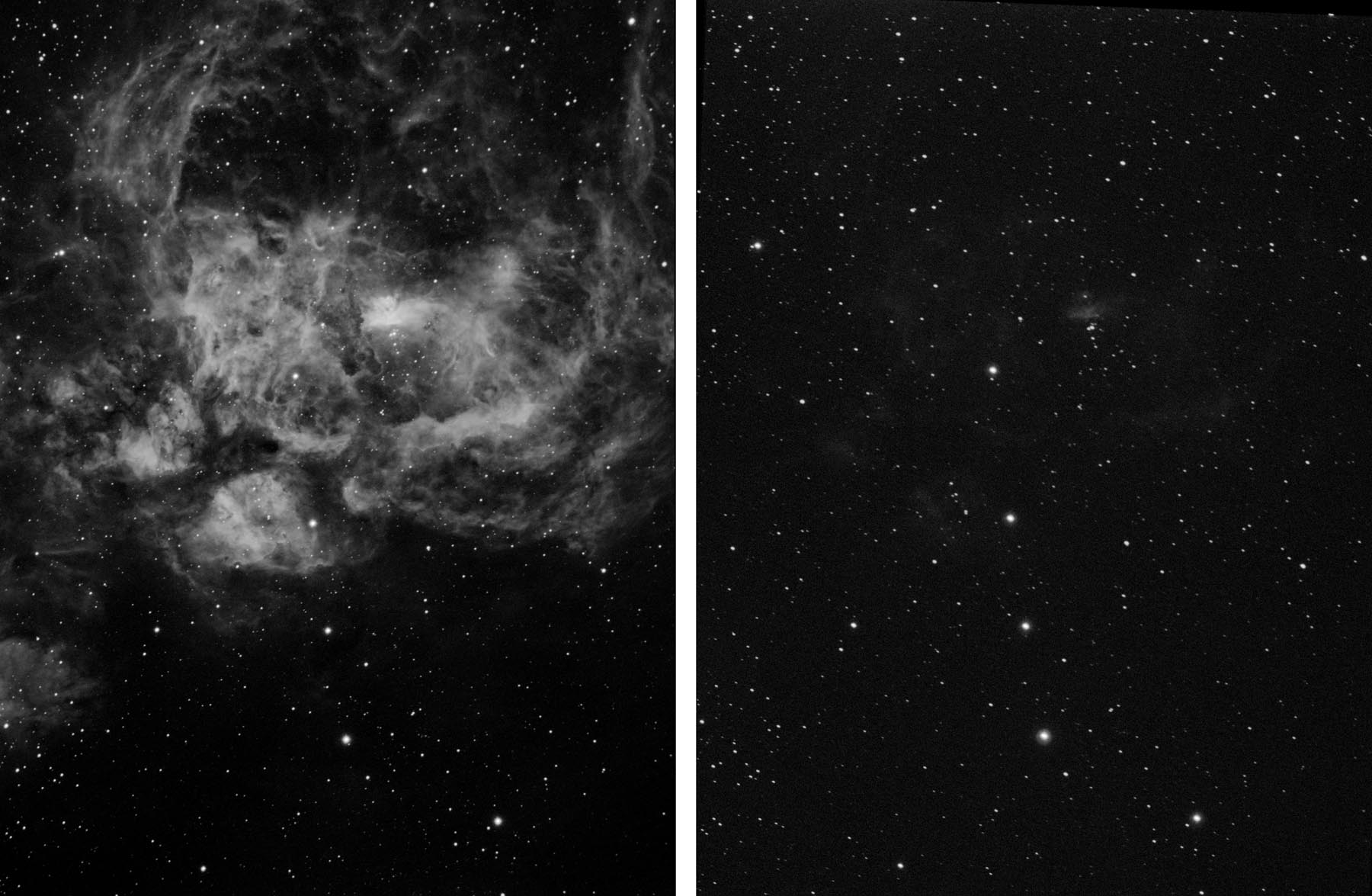
Figure 4. Narrow-band images of NGC 6357 in (left) Hα and (right) Hβ wavelengths.
The "Stick Man" turns out to have some very interesting companions in the forms of clusters and nebulas. This whole region of the sky is full of interesting objects, and I hope to be able to capture more of them over the next couple of months, if the weather and the moon will cooperate.
Wait— there's even more to the story of NGC 6357! In researching the details of this nebula on the Internet, I came across a host of postings about an ongoing effort to petition the International Astronomical Union (IAU) to officially change the name of NGC 6357 to honor a character in a Japanese anime series. The character is Madoka Kaname, a "magical girl" in the popular TV series Puella Magi Madoka Majica, or "Magical Girl Madoka Magica". "Magical girls" are a popular genre of characters in Japanese anime where a young girl (usually a schoolgirl) is endowed with magical powers in order to fight demons, witches, and other evil-doers to protect humanity (like Sailor Moon). In the story, Madoka ultimately sacrifices her worldly form to become the transcendent goddess "Madokami" (from Madoka + "Kami"— "god"). She is shown in Figure 5.

Figure 5. Madokami.
Source: Japanator.
Well, apparently some fans of the anime series were perusing astronomical imagery of NGC 6357 and came upon something that they thought looked very familiar— Madokami herself! As shown in Figure 6, which is a published image of the portion of the nebula encompassing Pismis 24, there is a resemblence to a human figure in pink and white (with stellar legs). And the electric pink Hα + Hβ emissions in this portion of the nebula do match Madoka's characteristic pink hair. So, ...

Figure 6. The Madokami Nebula.
Source: Japanator.
In case you think that the image in Figure 6 has been "Photoshopped" to make it look more like a human figure, Figure 7 below shows the corresponding portion of my Hα image from Figure 4.
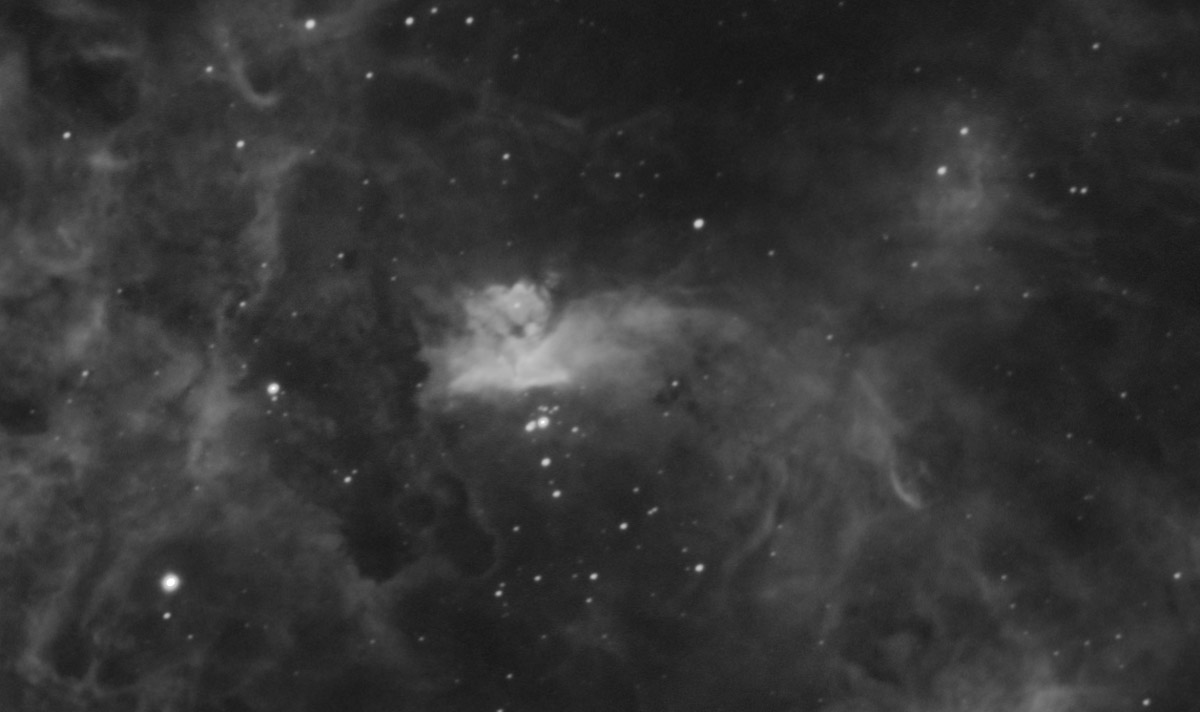
Figure 7. Detail from my Hα image (Figure 4) showing the the Madokami Nebula.
Okay, you can say that this is another example of the "Face on Mars" phenomenon wherein an object changes its appearance completely when viewed from a different angle or with a different exposure. And you'd be right. Still, over 10,000 fans have signed the petition to the IAU asking that the name of NGC 6357 be officially changed to the "Madokami Nebula".
So, should the name of NGC 6357 be changed? I say, why not? I really can't make out a "skull and dove" in any of the images of the nebula I've seen and, as for a lobster— well, lobsters are ugly. The character Madokami is beautiful.
 Return to SOCO Blog Page
Return to SOCO Blog Page
 Return to SOCO Main Page
Return to SOCO Main Page
Questions or comments? Email SOCO@cat-star.org